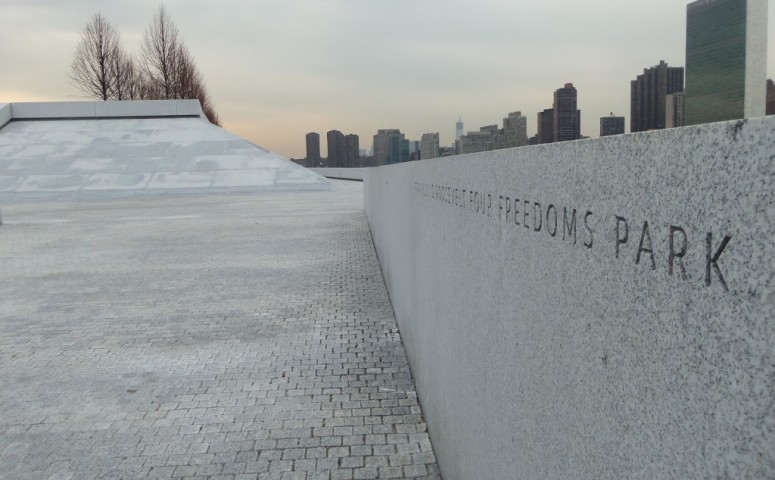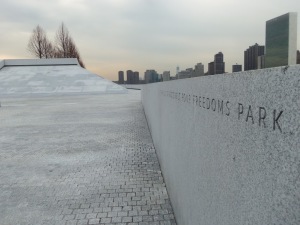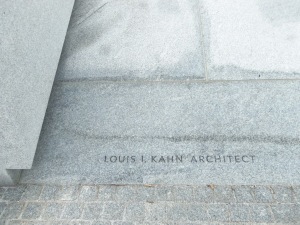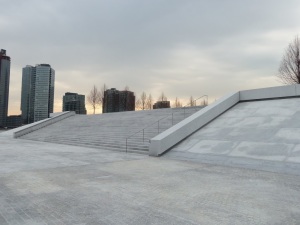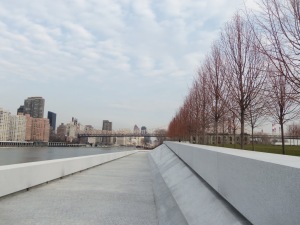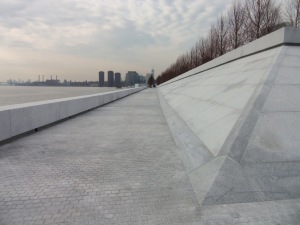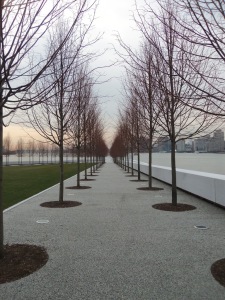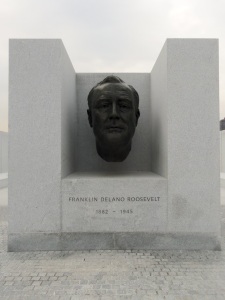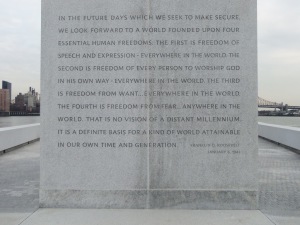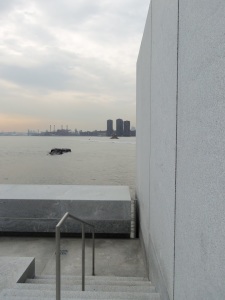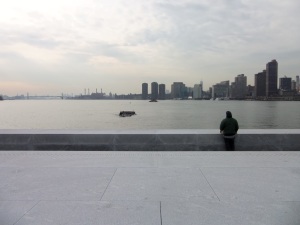Freedom & Choice
One friend said, “It looks a bit austere.” At first glance, it probably is. But like so many great minimal environments, it asks for patience and generosity. You give, and in turn it gives back.
This is also what the artists Mark Rothko, Richard Serra, Donald Judd, and, more recently, Olafur Eliasson ask. Trust them with your time and you may be rewarded with a small measure of serenity—perhaps even with the connection between art and the divine that Dominique de Menil was so focused on.
Designed by Louis Kahn, the Franklin D. Roosevelt Four Freedoms Park is an outdoor sanctuary at the southern tip of what is now called Roosevelt Island, created as a memorial to FDR. The park opened last fall. Kahn’s gift took 40 years to be realized, but it presents a path for human beings to treat each other to peace.
They couldn’t have been more different: Roosevelt, the Brahmin from Hyde Park, and Kahn, the immigrant from a small Baltic country that endured centuries of foreign rule. And yet they couldn’t have been more similar. Their fundamental vision was a very long one. Roosevelt was trying to save the world for eternity, and Kahn was trying to build places that might transcend time.
This memorial contrasts with Lawrence Halprin’s narrative-heavy memorial to FDR in Washington, D.C. Each memorial celebrates something different. In a city of marble mausoleums, Halprin’s meandering rooms provide an antidote and a history lesson. Across from midtown Manhattan and the U.N., in the middle of the East River, Kahn’s memorial also provides an antidote. A place to pause, revere, and rededicate.
The inscription in the stone is taken from FDR’s famous speech of January 6, 1941:
In the future days, which we seek to make secure, we look forward to a world founded upon four essential human freedoms.
The first is freedom of speech and expression—everywhere in the world.
The second is freedom of every person to worship God in his own way—everywhere in the world.
The third is freedom from want—which, translated into world terms, means economic understandings which will secure to every nation a healthy peacetime life for its inhabitants—everywhere in the world.
The fourth is freedom from fear—which, translated into world terms, means a world-wide reduction of armaments to such a point and in such a thorough fashion that no nation will be in a position to commit an act of physical aggression against any neighbor—anywhere in the world.
That is no vision of a distant millennium. It is a definite basis for a kind of world attainable in our own time and generation.
The inscription reproduced in the new park ends with the word “generation,” omitting the second half of the speech. This truncation must be intentional for reasons beyond space. For example, the phrase, “…and its faith in freedom under the guidance of God” is left out. Perhaps in our secular era, God is left up to the interpretation of each individual.
To achieve these freedoms, we must spend some time alone with ourselves and understand our common purpose. That is what these sequences of spaces can offer everybody.
When the park opened, many of the reviewers wrote about the materials and placement of the stones in the chamber at the conclusion of the journey, a chamber with no roof and the one wall open to the vista out across the water. But the journey to this place of reflection is also worth thinking about. It offers many choices. You can mount the stairs without a clear idea of the conclusion and then proceed down either side of a dramatic allée of trees towards FDR’s statue and the outdoor room. Or you can choose a gentle ramp up the west or east side of the memorial, watching the river but not seeing the destination. All choreographed carefully, but no clear path. I think Kahn’s point is simple. There are different paths to freedom, but we have to choose one and ultimately reckon in some way with ourselves.
Please be sure and check the website for current hours. The park is not open every day.
